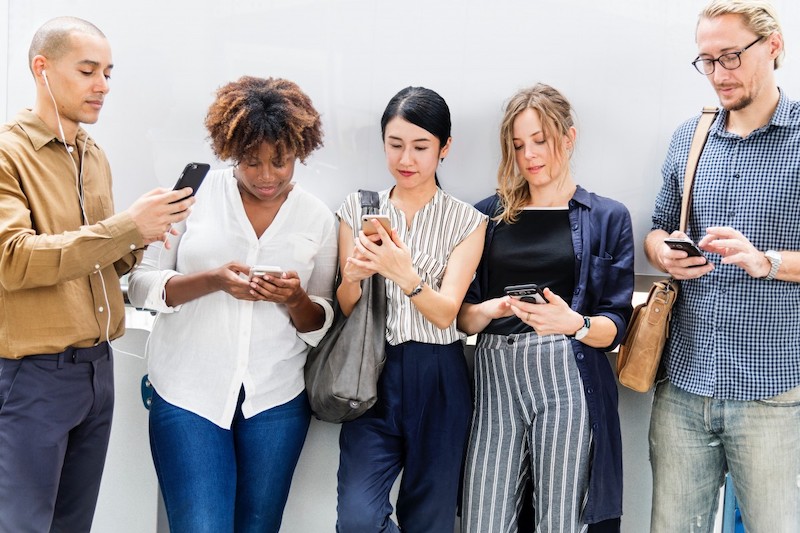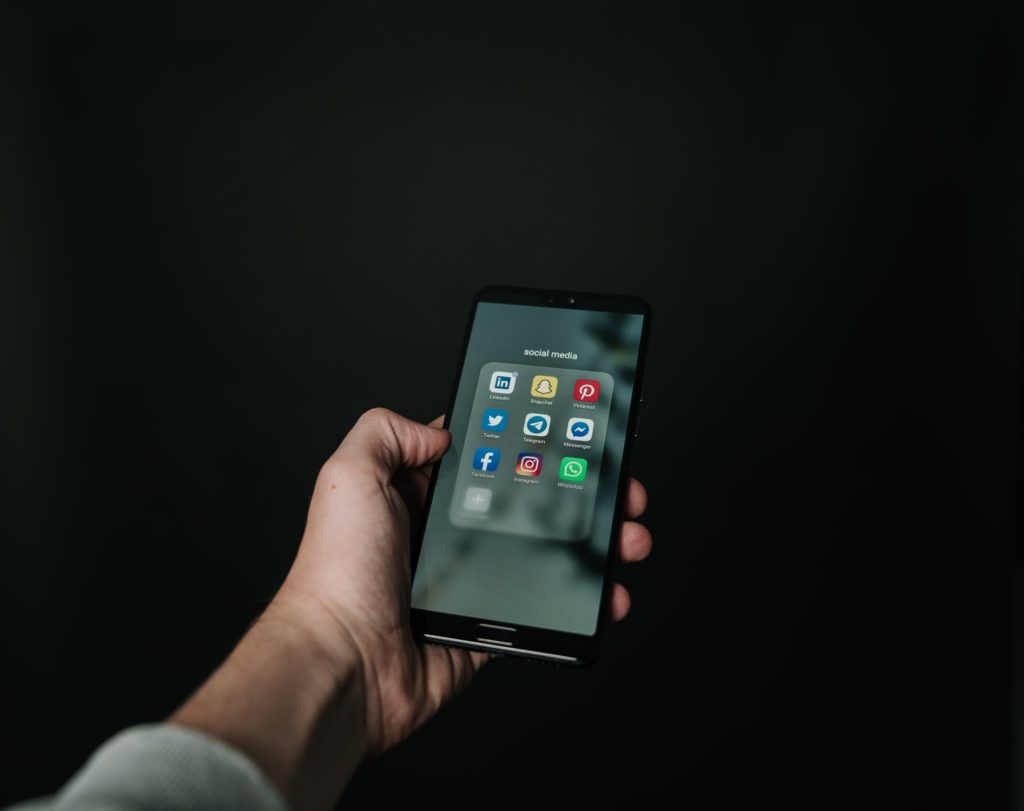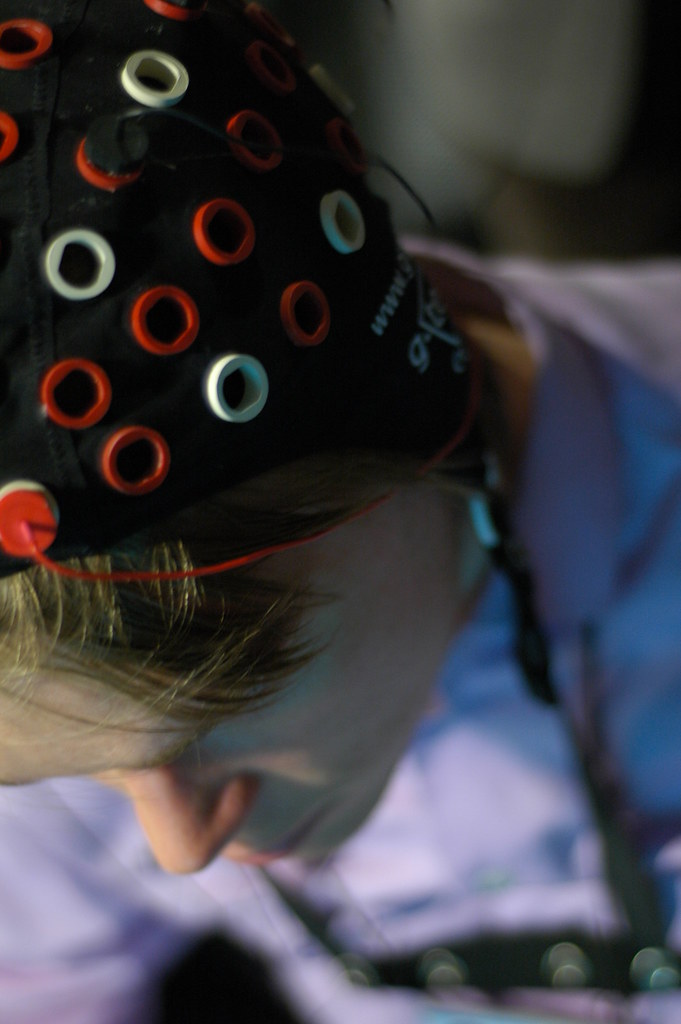Phone Addiction
Conveniently located to serve the areas of Santa Monica, Venice, South Bay, Brentwood, Beverly Hills, Pasadena and all of Greater Los Angeles

Social media and hashtags. iPhone vs. Android. Selfies and memes.
With the introduction of the internet to the masses and the subsequent creation of social media and ease of access in remaining connected, it has become commonplace to be attached to our phones. With the convenience of smartphones and tablets, we can receive instant gratification in the form of entertainment, validation, and information. Even though it can be a positive thing to have the world at our fingertips, there are consequences we may or may not be accepting.
Contents
- 1 About
- 2 What the Pros Say
- 3 Social Media Addiction
- 4 FOMO (Fear Of Missing Out)
- 5 Nomophobia (No mobile phone phobia)
- 6 What is the Addiction?
- 7 Neurofeedback Treatment for Phone Addiction
- 8 Neurofeedback Protocol
- 9 Neurofeedback Candidates
- 10 Consultation
- 11 Results of Neurofeedback
- 12 Additional Resources
About
As of January 2016, Twitter had a reported 310 million active users; Facebook reported 1.09 billion users, and YouTube had over 1 billion users.4, 5
According to Pew Research Center, over 70% of the United States’ population has adopted social media.1 There are 3.725 billion social media users across the globe. This represents 48% of the world’s total population. An overwhelming majority of active social media users access social networking through a mobile device.2 Instagram is reported to have 500 million daily users and 1 billion monthly users.3
According to an article published by the American Psychiatric Association, social media users who were connected to 7 to 11 social media platforms were more than 3 times more likely to experience depression and/or anxiety. This was in comparison to individuals who used the least amount of platforms (0 to 2).15
What the Pros Say
In 2017, Facebook’s first president and investor, Sean Parker, claimed that social networking sites are meant to be addictive. This is to guarantee the bottom line for the respective companies. The longer users remain on any given platform, the more money advertisers are ready and willing to pay.6 By social sites playing on the “vulnerabilities in human psychology,” the networks are able to build a site or app that becomes increasingly addictive to users.
Problematic social media use is an “excessive concern about social media, being driven by a strong motivation to use social media, and devoting so much time and effort to social media use that it impairs other social activities, studies/job, interpersonal relationships, and/or psychological health and well-being.”7

According to the 5th Edition of the Diagnostic & Statistical Manual (DSM-5), to receive a diagnosis of a “[substance] use disorder” to most substances covered in the guide, one must meet a certain number of criteria. These criteria may include, but is not limited to, using the substance more or in larger quantities than was intended, experiencing craving or desire for the substance, have had prior failed attempts at reducing or ceasing use or a desire or cease or reduce use, increasing use over time due to experiencing tolerance at lower levels, use interferes with functioning in important areas of life, and using the substance when it is inappropriate or dangerous to do so.
An article by Hawi and Samaha identified that those with addiction to social media exhibited several manifestations of behavioral addiction symptoms. These included salience, tolerance, conflict, withdrawal, relapse, and mood modification.4, 8 While excessive social media use may be seen as problematic, a question which can be raised is: with the advent of social networking sites and apps and their ease of access, are researchers over pathologizing everyday life?
Social media is a relatively new phenomenon that has had immense popularity. With these platforms being so popular, is it addiction we are noticing or simply people engaging with what has become a part of our lives?8
Individuals who use social media excessively find it difficult to communicate face-to-face. Because social media offers a variety of immediate rewards that result in continued and increased use, there is the potential consequence of exacerbating problems. The resultant depressed moods drive users to continue engagement in social media sites, leading to a cycle of addiction.8
FOMO (Fear Of Missing Out)
Watching others (seemingly) enjoying their (seemingly) enjoyable lives drives those watching from the sidelines to experience a combination of feeling left out, jealousy, and disappointment with their own lives.9 FOMO has been defined as “[a] pervasive apprehension that others might be having rewarding experiences from which one is absent.”8
With the ability to curate an ideal online persona, social media users can strategically highlight the best representations of their experiences through pictures, videos, text posts, and live streams. Those viewing the content may be motivated to force connections and experiences, or continue to scroll through social media in order to keep up with what is happening online.

Social exclusion, or the perception of it, seems to take hold when the viewer is engaged in tasks that are not exciting or enjoyable to them. When university students kept a journal of their social media habits, it was found that FOMO was mostly experienced when the students were at work or doing homework, during the evening, and into the weekend.9 Because of the increase in anxiety, the pressure to remain “in the loop,” and the perceived lack of enjoyment of their personal lives, users are more likely to experience lower self-esteem and difficulty sleeping. As it ties into social media use and addiction, FOMO has been associated with increased Facebook use, lower mood, lower well-being, lower life satisfaction, and inappropriate and dangerous use.
Nomophobia (No mobile phone phobia)
Nomophobia is the fear of being without one’s phone and the resultant anxiety that ensues. With technology being readily available in the form of smartphones, 67% of smartphone users reported checking their phones for alerts even if there has been no notifications. 44% of users admit to sleeping with their phones so they do not miss any updates or notifications.10
Anxiety, stress, phone addiction, and depression have been positively correlated to excessive mobile phone use.11 While not a formal diagnosis, nomophobia seems to be so prevalent in society, it was called to be included in the DSM-5 by the respective task force.12
Phantom Vibration Syndrome
Phantom vibration syndrome is the sensation of a phone ringing or vibrating when it is not. Different from a hallucination, phantom ringing or phantom vibrating is thought to occur because our connection to our phones is so intimate. We perceive ringing more so out of habit instead of through a perceived reality, as in hallucination that may be related to schizophrenia. Nonetheless, phantom vibrations, or ringing, can be connected to our desire to stay informed and/or to perceive connection to others.
What is the Addiction?
Because of the relatively recent introduction of mobile technology, social media addiction or phone addiction has not found its way into the literature through long-term, impactful studies in a significant manner. However, one area for consideration is understanding whether it is the technology to which we are addicted versus what the technology does for us.
Mobile has been injected into our everyday lives in recent years.
Early adaptation among millennials and younger generations has been fairly quick and this may have created a sense of dependency, as viewed by people who did not accept mobile technology as an augment to everyday functioning.
…It’s not the phone
Kuss and Griffiths stated, “[to] and outsider, wanting to be always-on may seem pathological. All too often its labelled an addiction. The assumption is that we are addicted to the technology. The technology doesn’t matter. It’s all about the people and information.”8
Removing the “phone” from “phone additiction” allows us to address the underlying issues that may seemingly create an addiction to technology.
In the scope of social media, users have been encouraged to share aspects of their lives that may be typically uninteresting to others. What drives this tendency to “overshare”? Some may argue that it stems from our innate desire to belong. As social creatures, we naturally want to talk about ourselves. So we may post on Facebook and Instagram many times throughout the day as an outlet to feed our need to share. Activating the prefrontal cortex, ventral tegmental, and nucleus accumbens regions of the brain, this “reward pathway” creates a feedback loop with a surge of dopamine that encourages us to continue sharing about ourselves.14
In a nutshell, being a part of a group has been essential for human survival.
In order to be accepted as a part of a group, one must “self-promote” in order to have others identify with the individual, and consequently, accept them into the group. Social media communities are the groups to which people desire to belong in the modern age. It may be presumed that if one does not belong to social media community, they are a societal reject, thus impinging on their “survival” or relevancy within this community.
Reaching back to the concept of FOMO, this need to belong can create or increase feelings of depression or anxiety. One may perceive their own life as uninteresting, compared to others, and this can exacerbate the need to continue social media use – further perpetuating the cycle of use.
Anxiety, Depression, and Belongingness
Using mobile technology to stay connected has many pros and cons. Being “on” or available at all times, feeling negatively in relation to others’ positive experiences, and/or fearing a missed connection can be anxieties many people face. But what could be the underlying reasoning for feeling so poorly with regards to social media and phone usage?
Through retraining the brain to more readily reduce anxiety and depression, one can notice a more pleasant social media and life experience. An individual may notice increased feelings of connectedness, better quality interpersonal relationships, and more acceptance for things they cannot control.
Neurofeedback Treatment for Phone Addiction
Neurofeedback training with NeuroZone provides clients struggling with anxiety, depression, and addictive behaviors with skills to effectively cope with their experiences without medications. By addressing the potential reasons for problematic phone use, one can reduce the resultant consequences, creating a healthier and happier reality.
Neurofeedback is a non-invasive, non-pharmacological treatment that is effective in assisting clients in coping with stressors in a healthy manner.
Psychopharmacological interventions may have unwanted side effects, making neurofeedback more desirable as a treatment option. It is safe, effective, and efficient. If you are interested in learning more about neurofeedback and how it can help you, contact NeuroZone today for a free consultation.
Neurofeedback Protocol
NeuroZone works with each client to identify the areas of the brain that may be responsible for the mental health distress one may experience that leads to problematic social media use. This is accomplished through Quantitative Electroencephalography (qEEG) brain mapping. When you come in for your first 30-45 minute brain mapping session at NeuroZone, 19 qEEG electrodes will be placed against your scalp, along with a cap that will help hold them in place. Brain mapping is non-invasive and is not painful. The leads will read your brain’s electrical activity as you do a calming task, such as reading. During this time, the brain waves will be visualized on a screen and measured against a standardization group.

The results from your brain mapping assessment, along with diagnostic testing and clinical interviews, will be interpreted by our skilled professionals. A personalized treatment plan will be created to address your specific needs. From there, you will return to complete on-going, individual treatment sessions.
Each neurofeedback session is designed to help retrain your brain to cope with anxiety, stress, attention, and a number of other concerns. During the treatment sessions, you will have several leads placed along your head that will read your brain’s electrical response throughout the session. You will engage in a task on a computer screen where you will receive immediate feedback through visualization of your brain waves on the screen. If you accomplish the task successfully, you will be given positive reinforcement. This is to increase the likelihood of repeating the successful behavior in the future. If you do not meet the desired goal during the session, you will receive negative reinforcement, decreasing the likelihood of repeating the unhelpful pattern.
The positive reinforcement of the preferred action or physiological response will create stronger pathways in the brain that will increase healthy coping behaviors in everyday life. By doing so, you may reduce the need to seek social media or phone use over time, possibly inducing a more positive life experience.
Neurofeedback Candidates
Ideal candidates for neurofeedback are individuals from 2 years old through late adulthood. Ideally, clients are able to sit relatively still for a period of time and attend to the tasks presented during neurofeedback sessions. They should also be able to tolerate the electrodes being placed against the skin and the cap on the head.
Consultation
During a free consultation at NeuroZone, you will have the opportunity to speak with a highly skilled professional and have your questions about neurofeedback addressed. If you would like more information about neurofeedback training at NeuroZone, give us a call at (310) 821-3640 to schedule your appointment.
Results of Neurofeedback
Creating new physiological responses to stressors is an ultimate goal of neurofeedback. Following neurofeedback training, clients can expect to respond to tensions in their lives in healthier ways. Anxiety and depression can be responses to perceived social isolation, FOMO, or even being without your phone for a period of time. Instead of dwelling on the unpleasant thoughts and behaviors that follow FOMO, neurofeedback teaches clients how to handle the undesirable feelings in the moment.
Ready to see what neurofeedback can do for you? Contact NeuroZone today for a free, no obligation consultation!
Additional Resources
- Pew Research Center. (2019). Social Media Fact Sheet. Retrieved from https://www.pewresearch.org/internet/fact-sheet/social-media/
- Kemp, S. (2019). Digital 2019: Q4 Global Digital Statshot. Retrieved from https://datareportal.com/reports/digital-2019-q4-global-digital-statshot
- Statista. (2019). Distribution of Instagram users in the United States as of August 2019, by age group. Retrieved from https://www.statista.com/statistics/398166/us-instagram-user-age-distribution/
- Hawi, N. S. & Samaha, M. (2017). The relations among social media addiction, self-esteem, and life satisfaction in university students. Social Science Computer Review, 35(5), 576-586. DOI: 10.177/0894439316660340.
- Dehghani, M., Niaki, M. K., Ramezani, I., & Sali, R. (2016). Evaluating the influence of YouTube advertising for attraction of young customers. Computers in Human Behavior, 29, 165-172. Retrieved from http://dx.doi.org/10.1016/j.chb.2016.01.037
- [Good Morning America]. (2017, November 10). Facebook founder warns of social media addiction [Video File]. Retrieved from https://youtu.be/LPwR1i-sWpo
- Shensa, A., Escobar-Viera, C. G., Sidani, J. E., Bowman, N. D., Marshal, M. P., & Primack, B. A. (2017). Problematic social media use and depressive symptoms among U.S. young adults: A nationally-representative study. Social Science & Medicine, 182, 150-157. Retrieved from http://dx.doi.org/10.1016/j.socscimed.2017.03.061
- Kuss, D. J. & Griffiths, M. D. (2017). Social Networking Sites and Addiction: Ten lessons learned. International Journal of Environmental Research and Public Health, 14(3), 311. Retrieved from https://doi.org/10.3390/ijerph14030311
- King University Online. (2019). Scared to Stay In: The psychology of FOMO. Retrieved from https://online.king.edu/news/psychology-of-fomo/
- Thompson, P. (2018). Nomophobia & Smartphone Addiction Among Children. Retrieved from https://psychcentral.com/blog/nomophobia-smartphone-addiction-among-children/
- Lee, S., Kim, M., Mendoza, J. S., & McDonough, I. M. (2018). Addicted to cellphones: exploring the psychometric properties between the nomophobia questionnaire and obsessiveness in college students. Heliyon, 4(11). https://doi.org/10.1016/j.heliyon.2018.e00895
- Davies, N. (2018). Nomophobia: The modern day pathology. Retrieved from https://www.psychiatryadvisor.com/home/topics/anxiety/nomophobia-the-modern-day-pathology/
- Dumas, T. M., Maxwell-Smith, M., Davis, J. P., & Giulietti, P. A. (2017). Lying or longing for likes? Narcissism, peer belonging, loneliness and normative versus deceptive like-seeking on Instagram in emerging adulthood. Computers in Human Behavior, 71, 1-10. http://dx.doi.org/10.1016/j.chb.2017.01.037
- [Your Discovery Science]. (2017). Is social media addictive? | Through the wormhole. [Video File]. Retrieved from https://www.youtube.com/watch?v=Bi9i1WHQmVc&feature=youtu.be
- Zagorski, N. (2017). Using many social media platforms linked with depression, anxiety risk. Psychiatric News. DOI: https://doi.org/10.1176/appi.pn.2017.1b16




